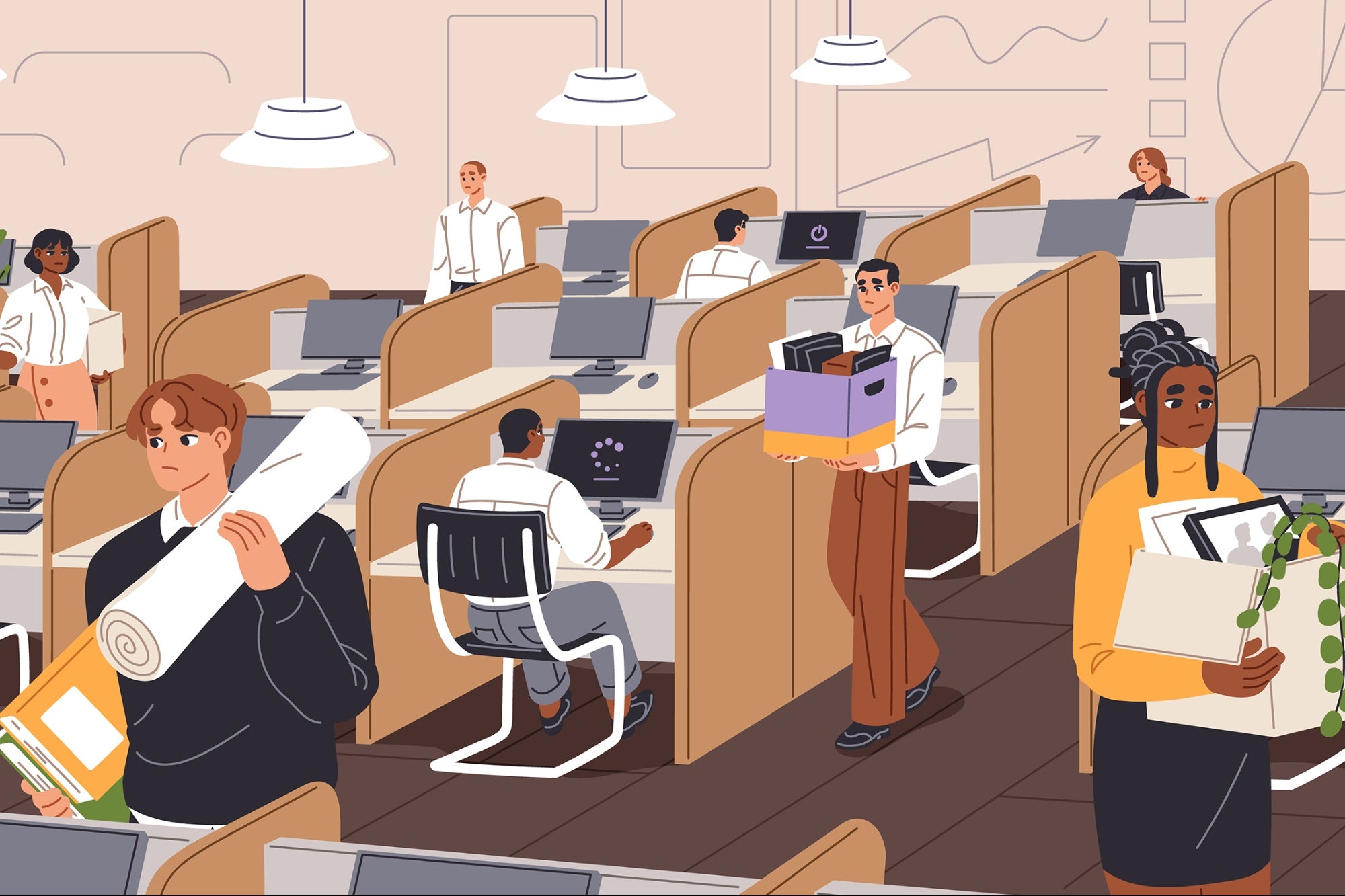How to Put the "Fun" Back into Your Business Fundamentals It's time for business leaders to inject some fun into the fundamentals of a flexible working world.
By James Goodnow Edited by Micah Zimmerman
Key Takeaways
- By "fun," I'm not suggesting installing a giant slide or an adult-sized ball pit.
- Create a culture that allows for levity, encourages genuine connections, promotes creativity and instills a sense of happiness in work
Opinions expressed by BIZ Experiences contributors are their own.
We are living and working in an era with the greatest rate of change since the Industrial Revolution, where businesses strive for increased agility, tighter efficiencies and heightened engagement. In the effort to survive in a hypercompetitive environment, the concept of "fun" in the workplace is often reduced to a whimsical whisper in the quest for productivity, growth and revenue. When properly integrated into an organization's culture, however, "fun" can be a catalyst for motivation, profitability and sustained success, and its benefits extend far beyond office walls or computer screens.
Now, let's not get tangled in semantics. By "fun," I'm not suggesting installing a giant slide or an adult-sized ball pit in your lobby. I'm referring to a culture that allows for levity, encourages genuine connections, promotes creativity and instills a sense of happiness in work — a culture of fun that promotes building strong bonds and community among coworkers.
Related: How to Create a Workplace Culture Where Everyone Feels Like They Belong
The lost ingredient in the virtual world
The need for fun has taken on new significance in a remote world. First, let me say that I'm a proponent of flexible working. I've seen firsthand how a thoughtful and balanced remote-working policy improves recruiting, retention, and productivity. Although compelling business arguments exist for working remotely, sitting on Zoom for hours likely doesn't meet anyone's definition of fun.
What was fun about the days when everyone was in the office? For many, it was those spontaneous moments of laughter, the energy of group discussions in a room where ideas bounced around like charged particles, and the serendipitous brainstorming that happens over a coffee break. These moments, although fleeting, served as emotional anchors. They cultivated team spirit, nurtured interpersonal relationships and contributed to job satisfaction. Today, in a world where work interactions are often limited to structured virtual meetings, the organic evolution of ideas and these crucial moments of connection have become incredibly scarce.
Related: The Surprising Benefits of Having Fun at Work
The new importance of old values
So there's no confusion: I'm not advocating for a mass five-day-a-week, return-to-office policy. Many businesses are pursuing this approach, and I think it's a mistake. In my opinion, those businesses and firms will pay a steep price for being out of touch with the world and what many employees seek. However, companies that embrace flexible working don't automatically score 100% in the fun department. They will have to get more creative, dedicating time and energy to keep employees fulfilled and happy over the long run. If they do, my thesis, informed by my experience and those of leading organizations worldwide, is that businesses can have their proverbial cake and eat it, too.
So, how can companies weave fun into their increasingly digital tapestry?
1. Invest in fun-first in-person events
In a remote-first world, whenever possible, businesses need to invest in and support in-person events to encourage community and connection. Remote working saves businesses a lot of money — reduced office space, lower utilities, fewer lunches, office supplies, parking expenses and more. Companies must redeploy some of this capital and invest it in gatherings, retreats and social events. These get-togethers should be fun-focused and have one goal: to provide an environment where employees can truly get to know one another beyond their professional personas.
What do these events look like in practice? I work at Fennemore, a large law firm with 17 offices around the U.S. At our firm retreat earlier this year; we hosted a "Back to the Future" themed get-together — complete with 80s party costumes and a DeLorean that looked as though it was straight off of the set of the original movie. Lawyers may be stereotypically uptight, but our employees stretched their creativity, took some risks, and had a blast.
During the event, we hosted an on-theme "hackathon," where everyone participated in brainstorming ways to improve training in remote settings. Our thinking was that if we provided a cash prize of $5,000 for the winning idea, employees would have fun, feel supported, and help us improve their remote-work training experience in the process. It was tremendously successful, and we ended up incorporating many of our employees' ideas.
Related: 5 Strategies to Build a Fun Work Culture That's Also Productive
2. Reinvent onsite meetings
I know that not every meeting can be fun-focused; the work must be done. So when teams do gather to work in person, make it count. Beyond the presentations and reviews, incorporate team-building exercises, workshops, or even a simple walking meeting outdoors to break up what can seem like monotonous spreadsheets or lectures.
The best meetings allow for plenty of dynamic interaction. We recently hosted an onsite leadership training program called "Fennemore University." Rather than putting people in a room to listen to presenter after presenter, we created an interactive format intended to encourage conversation and connection. After a brief, no-frills training session, we separated participants into groups, empowered them to wrestle with concepts, and asked them to present their findings. Instead of listening for hours to various presenters, our employees collaborated, built bonds and had fun with people they normally see in a virtual box.
Related: The Underrated Value of Fun in the Workplace
3. Gamify the mundane
Not every task or goal necessitates teamwork or meetings. What then? Is there a way that people can build bonds when doing document review, data entry or simply getting their work done? Yes. Convert routine tasks or targets into engaging challenges or competitions. Leaderboards, badges, quests, or even simple shout-outs can transform a mundane task into a challenge—driving engagement and a sense of accomplishment.
All-hands meetings can be informative, but sharing so much strategic information can be long and, I'll say it, boring. At Fennemore, we transformed our all-hands December Meeting into a game show. I kid you not — we opened up with a game of Plinko (with cash prizes!) to break the ice and garner excitement for what was to come. We then went through the agenda with Bob Barker-inspired enthusiasm, encouraging colleagues to share important updates in a lively format. We sprinkled these updates with submitted dance videos from colleagues across our firm, creating a safe space for colleagues to connect, laugh, and enjoy one another's dance moves, or lack thereof. By embracing contestant mindsets, showing off our inner rockstars, and cheering each other on, this all-hands December Meeting served a dual purpose: informing staff about our strategic next steps and fostering camaraderie.
Related: 5 Ways to Gamify Your Work
Fun's final thought
Having a fun culture takes effort, but it's absolutely worth it. Incorporating the fun factor into your organization starts a powerful domino effect: Organizations with fun work cultures often have higher employee morale and engagement, better collaboration and problem-solving, and, ultimately, a better work product. Plus, your organization will become more attractive to the best and the brightest talent. It's a win-win. While not all meetings can be like Disneyland, they can be pivotal tools to forge connections in an increasingly digital landscape.
The companies of tomorrow won't only be distinguished by their balance sheets or technological prowess. They'll shine through their human touch, vibrant cultures, and willingness to embrace the often overlooked and underestimated power of fun. Incorporate some fun and see what happens—I bet you'll reap dividends and fuel ongoing success.











